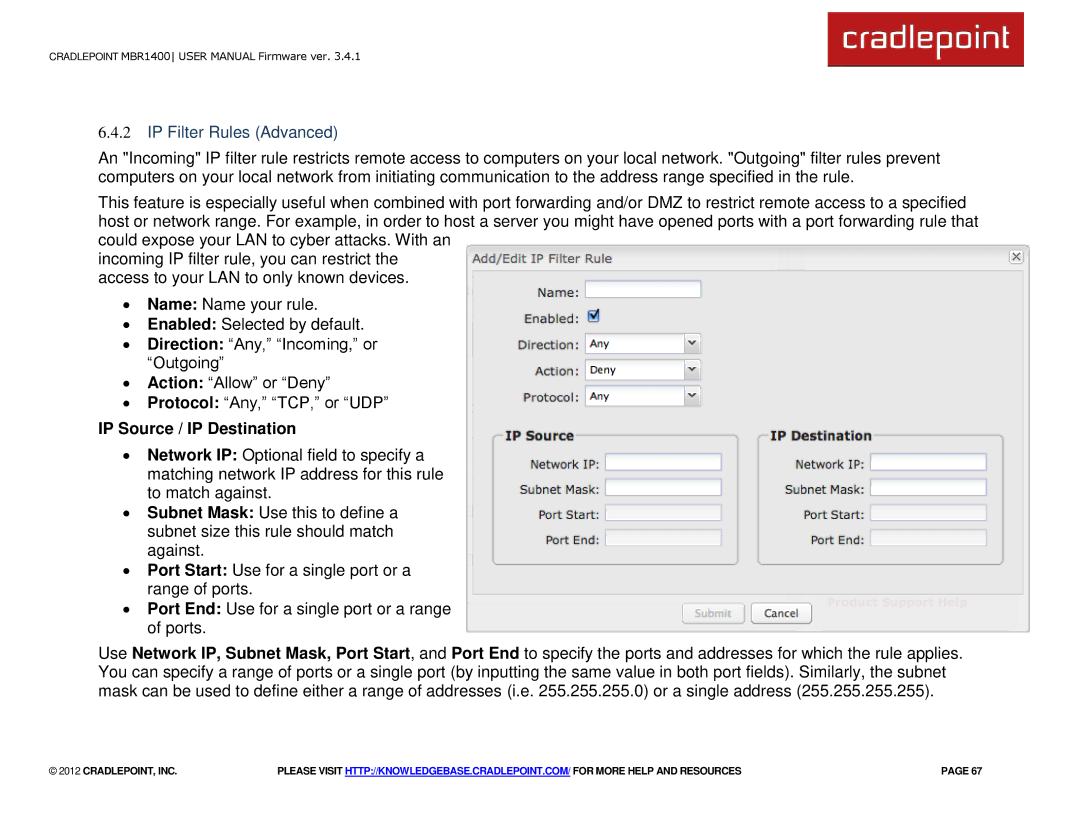
CRADLEPOINT MBR1400 USER MANUAL Firmware ver. 3.4.1
6.4.2IP Filter Rules (Advanced)
An "Incoming" IP filter rule restricts remote access to computers on your local network. "Outgoing" filter rules prevent computers on your local network from initiating communication to the address range specified in the rule.
This feature is especially useful when combined with port forwarding and/or DMZ to restrict remote access to a specified host or network range. For example, in order to host a server you might have opened ports with a port forwarding rule that could expose your LAN to cyber attacks. With an
incoming IP filter rule, you can restrict the access to your LAN to only known devices.
∙Name: Name your rule.
∙Enabled: Selected by default.
∙Direction: ―Any,‖ ―Incoming,‖ or ―Outgoing‖
∙Action: ―Allow‖ or ―Deny‖
∙Protocol: ―Any,‖ ―TCP,‖ or ―UDP‖
IP Source / IP Destination
∙Network IP: Optional field to specify a matching network IP address for this rule to match against.
∙Subnet Mask: Use this to define a subnet size this rule should match against.
∙Port Start: Use for a single port or a range of ports.
∙Port End: Use for a single port or a range of ports.
Use Network IP, Subnet Mask, Port Start, and Port End to specify the ports and addresses for which the rule applies. You can specify a range of ports or a single port (by inputting the same value in both port fields). Similarly, the subnet mask can be used to define either a range of addresses (i.e. 255.255.255.0) or a single address (255.255.255.255).
© 2012 CRADLEPOINT, INC. | PLEASE VISIT HTTP://KNOWLEDGEBASE.CRADLEPOINT.COM/ FOR MORE HELP AND RESOURCES | PAGE 67 |
